Previous - Estonian coins before euro
Estonian euro coins - catalog with values
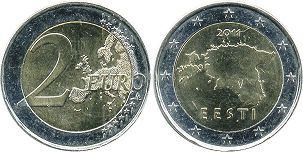
2 euro 2011 (2011- )
bi-metallic - nickel-brass/copper-nickel
circulation coinage
2 EURO
EESTI 2011
Coin value ~ 4-6 USD

2 euro 2012
bi-metallic - nickel-brass/copper-nickel
commemorative coin
10th anniversary of the introduction of euro cash
2 EURO
EESTI / 2002-2012
Coin value ~ 3-4 USD
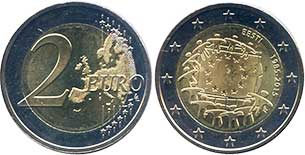
2 euro 2015
bi-metallic - nickel-brass/copper-nickel
commemorative coin
30th anniversary of the EU flag
2 EURO
EESTI 1985-2015
Coin value ~ 3-4 USD
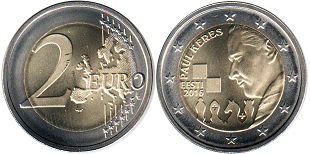
2 euro 2016
bi-metallic - nickel-brass/copper-nickel
commemorative coin
100 years since the birth of Paul Keres (chess grandmaster)
2 EURO
PAUL KERES / EESTI 2016
Coin value ~ 4-5 USD
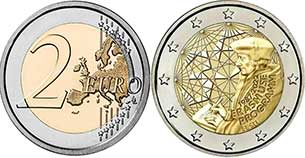
2 euro 2022
bi-metallic - nickel-brass/copper-nickel
commemorative coin
35 years of the Erasmus Programme
2 EURO
1987-2022 ERASMUSE PROGRAMM EESTI
Coin value ~ 3-4 USD
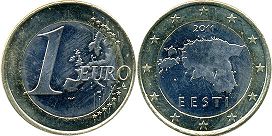
1 euro 2011 (2011- )
bi-metallic - copper-nickel/nickel-brass
1 EURO
EESTI 2011 / map of Estonia
Coin value ~ 3-5 USD
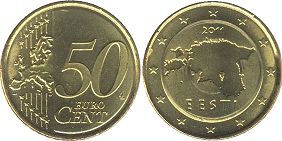
50 euro cent 2011 (2011- )
brass
50 EURO CENT
EESTI 2011
Coin value ~ 1-2 USD
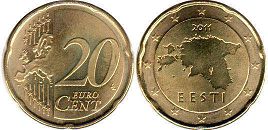
20 euro cent 2011 (2011- )
brass
20 EURO CENT
EESTI 2011
Coin value < US$1

10 euro cent 2011 (2011- )
brass
10 EURO CENT
EESTI 2011
Coin value < US$1
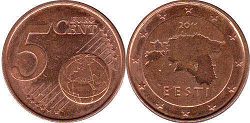
5 euro cent 2014 (2011- )
copper plated steel
5 EURO CENT
EESTI 2014
Coin value < US$1
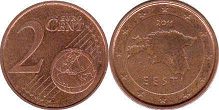
2 euro cent 2014 (2011- )
copper plated steel
2 EURO CENT
EESTI 2014
Coin value < US$1

1 euro cent 2012 (2011- )
copper plated steel
1 EURO CENT
EESTI 2012
Coin value < US$1
Euro coins of other countries
AndorraAustria
Belgium
Croatia
Cyprus
Finland
France
Germany
Greece
Italy
Ireland
Latvia
Lithuania
Luxembourg
Malta
Monaco
Netherlands
Portugal
San Marino
Slovakia
Slovenia
Spain
Vatican
Costs of Estonian euro coins in this catalog approximate and indicated specifically for the coin shown in the picture.
I do not buy or sell coins - this is just a catalog.

